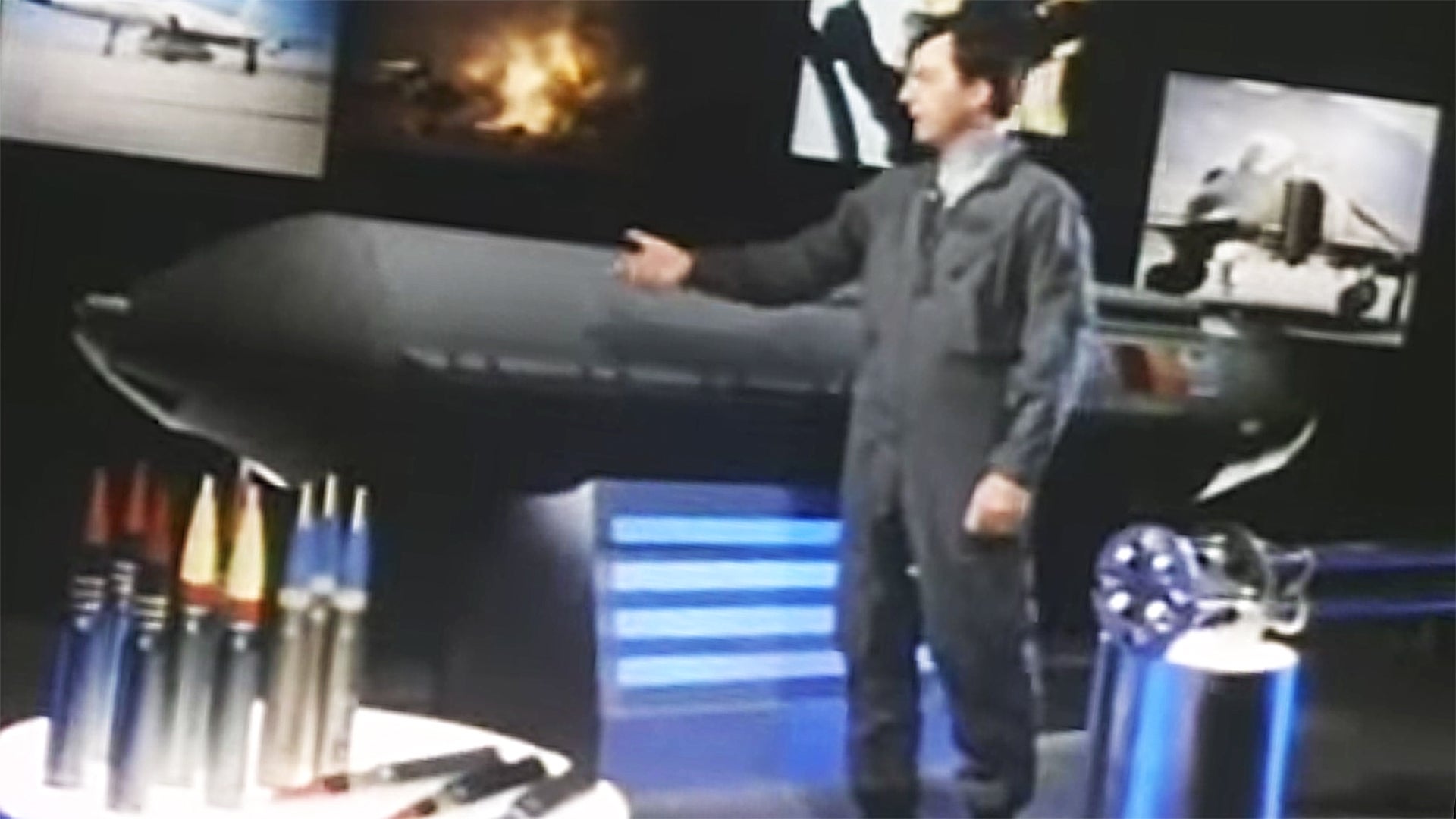Marketing reels for Cold War era weapons systems are incredibly entertaining to watch. It’s a little Madison Avenue, a little Hollywood, a little Pentagon E-ring, and a bit of Sham-Wow guy thrown in for good measure. This was a time before powerpoint, and print could only tell so much of the story, so contractors poured good money into these films even for smaller ancillary systems. And the best reels have a good pitch man, whether it be General Chuck Yeager, or in the case of the GPU-5 gun pod, a serious and clearly spoken fighter pilot-like dude that uses overtly clear hand gestures named Frank Adamski from GE’s Defense Systems Division.
The GPU-5, which contained a GAU-13 cannon—a truncated version of the A-10 Warthog’s massive GAU-8 Avenger cannon—has an interesting history. At one time it was used in an attempt to replace the A-10 with F-16s—an effort that failed for a number of reasons, including shaking the poor “electric jets” violently during firing. You can read all about this past saga in this previous feature of mine, in it I wrote:
“During what would be a turning point in the way the world looks at air power, the F/A-16s set out to prove their worth. The idea was to unleash continuous streams of precision fire from their big 30mm gun pods onto Saddam’s armor and material and to finally prove that the faster, shorter legged and more nimble F-16 could indeed become a low-level gunfighter like the A-10.
The results were less than desirable. In fact, they were horrible. Within the first 48 hours of continuous combat operations the GEPOD30s were proven to be totally unable to satisfy their intended mission. Precision fire was almost impossible with the setup as the F-16s software had not been adequately modified for aiming, and the vibration was so bad when the gun was fired that software tweaks probably would have made little difference anyway and it wreaked havoc on the F-16’s sensitive electronics and mechanical components.
The reality is that the system was so ill-suited to the aircraft that just firing the gun multiple times would tweak the pylon it is attached to and thus it would become skewed far off zero. Not to mention that in comparison to the low and slower flying A-10, in actual combat the F-16’s high speed made it hard to get a proper sight picture to aim during long strafing runs. Apparently maintainers and pilots had warned that the gun was ill-suited for the light fighter long before the deployment, but their mission was to try and make it work.
After the first few mission evolutions during the opening of Desert Storm, it was clear that the GPU-5 was an area suppression weapon at best, and the 174th unbolted the heavy gun pods from their jet’s and went back to using cluster and general purpose bombs on targets. A practice they would continue to practice as they patrolled their kill boxes throughout the war.”
Although it wasn’t that successful, the pod was something of technological marvel, especially when it comes to how its big, coke bottle-sized 30mm ammunition was stored. A helical magazine surrounded the gun itself, holding 353 rounds of ammunition—good for 10 one second bursts according to our pitchman Frank. The gun’s drive system ran on compressed air stored in a composite 3200psi air bottle. The whole thing was ungainly yet at the same time amazingly compact.

“The GPU-5/A: Hight tech simplicity… To strike and survive!”
Contact the author: Tyler@thedrive.com
